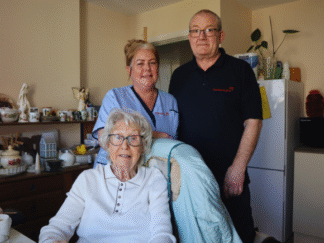Quality Assurance Policy and Procedure
| Health and Social Care Act 2008 (Regulated Activities)
Regulations 2014 |
16, 17, 2 |
| CQC Single Assessment Framework Topics
Safe Topic Areas: Learning culture Safe systems, pathways and transitions Safeguarding Safe environments Safe and effective staffing Infection prevention and control Effective Topic Areas: Assessing needs Delivering evidence-based care and treatment Monitoring and improving outcomes Caring Topic Areas: Workforce well-being and enablement
Responsive Topic Areas: Person-centred care Providing information Listening to and involving people Equity in access Equity in experiences and outcomes
Well-led Topic Areas: Shared direction and culture Capable, compassionate and inclusive leaders Freedom to speak up Workforce equality, diversity and inclusion Governance, management and sustainability Partnerships and communities Learning, improvement and innovation Environmental sustainability – sustainable development Please see the ‘Quality Statements’ section for full guidance |
|
Scope
This policy describes the processes that the organisation will follow to gather information about the quality of services provided from:
Engagement with:
- Service users Family
- Staff,
- Professionals Analysis of:
- Accidents and incidents Complaints
- Safeguarding Audits
- And other relevant information regarding service delivery.
The analysed data will be used to develop actions to continuously improve the quality and effectiveness of the services.
This policy and procedure are provided for the regulated activity of personal care.
Equality Statement
Our organisation is committed to equal rights and the promotion of choice, person-centred care and the promotion of independence. This policy demonstrates our commitment to creating a positive culture of respect for all individuals. The intention is, as required by the Equality Act 2010, to identify, remove or minimise discriminatory practice in the nine named protected characteristics of age, disability, sex, gender reassignment, pregnancy and maternity, race, sexual orientation, religion or belief, and marriage and civil partnership. It is also intended to reflect the Human Rights Act 1998 to promote positive practice and value the diversity of all individuals.
Key Points
- The highest quality care is the absolute right of all our service users.
- The organisation has a proactive and positive culture of safety based on openness and honesty, in which concerns about safety are listened to, safety events are investigated and reported thoroughly, and lessons are learned to continually identify and embed good practices and service improvements.
- The organisation has clear responsibilities, roles, systems of accountability and good governance. These are used to manage and deliver good quality, sustainable care, treatment and support.
- The organisation gathers information and monitors the service through range of activities and act on the best information about risk, performance and outcomes, and we share this securely with others when appropriate.
- Service users’ family, and professionals’ views will be sought, collated and used to continuously improve the services we provide.
- Our service users have, through routine evaluations, reviews and satisfaction surveys, (the results of which are published and distributed) the opportunity to input and express their views to enhance the services and their care.
- Guidance will be sought from external agencies, including NICE and CQC, to identify best and evidence-based practice to ensure that services delivered to service users are of the highest quality and fit for purpose.
- Risk management will be undertaken and mitigations identified for both service users and for the wider organisation/service delivery.
- Audits are used to identify causes for concern, themes/trends, areas of risk and provides the organisation with the opportunity to identify these early and to implement continuous improvement activities for the benefit of the service users and their carers.
- Staff and professional input into improving the services will be sought to identify new ideas and areas of concern which can be resolved before they become a major problem or incident. Staff views on the service quality and how to improve it will be sought and acted upon to ensure a high-quality service and continuous improvement.
Policy Statement
Quality Assurance processes and audit within this document will be used to assess the service quality against the Fundamental Standards, Health and Social Care Act 2008 (Regulated Activities) Regulations 2014 and other relevant legislation including the Mental Capacity Act 2005, the Equality Act 2010, Care Act 2014, as well as safeguarding service users from harm and abuse. The data acquired will be used to identify continuous improvement actions, minimise risks and incidents, as well as improve the outcomes for service users.
This policy forms part of the ‘Good Governance’ framework.
The Policy
The organisation is committed to continuous improvement and learning from engagement with service users, their family, staff and professionals who work with us to continuously improve service users care and the delivered services.
The organisation will use audits to identify opportunities for continuous improvement by monitoring and analysing its activities in key risk areas, as well as identify concerns or issues as early as possible before they become a major incident.
The organisation aim to make it easy for service users to share feedback and ideas or raise complaints about their care, treatment and support. Managers and staff will always involve them in decisions about their care and tell them what’s changed as a result.
The Organisation Aims to Provide Service Users:
- The highest quality care and support possible
- Feedback from our routine evaluations, reviews and satisfaction surveys Updates on actions and continuous improvement programmes
- Information on the results of quality assurance and audit activities, e.g. Infection Control Audits.
All staff, including managers and directors, are required to demonstrate their commitment, understanding and adherence to delivering the highest standards of quality care to all of our service users, in all aspects of their roles, and to discharge their responsibilities accordingly. In particular:
- The provider and management team are accountable for establishing a quality management system to ensure continuous improvement and a high-quality, safe service.
- All staff are responsible for the quality of their work and trained to perform their duties to the required legal and organisational standards set out in policies and procedures.
- Contractors employed for specific functions must meet agreed and specified standards. To deliver against the annual quality development plan, and other action plans developed by the management team, based upon, audits information and feedback from service users, professionals, staff and relatives:
- The plan will focus on specific and measurable standards with named staff responsible
- The plan will be updated using additional feedback from service users, professionals, relatives and staff to ensure the plan is working and improving services.
- Managers will closely monitor the quality and competence of staff service delivery by regular supervision and spot checks; this includes direct observation of care practice and unannounced visits to individuals’ homes when staff are delivering services (with the service user’s permission).
- Staff and managers will participate in annual appraisals which will be used to link staff development, company and personal objectives, to ensure continuous improvement, service success and quality.
The Registered Manager
The Registered Manager is responsible for ensuring:
- The quality of procedures, in line with regulations, fundamental standards, quality statements and all relevant guidance, e.g. NICE,
- For management of the quality assurance processes, including for preparing and distributing the engagement activities,
- Collation of the results, and
- The development, implementation and checking of action plans (in partnership with relevant stakeholders, e.g. staff).
Evidence Based and Best Practices
This policy sets out the values, principles and policies underpinning our approach to maintaining and improving quality and maintaining high standards; this includes following CQC guidelines to ensure evidence-based practice and the highest standards of care wherever possible. In addition, the Registered Manager will identify guidance from other sources including:
- NICE.
- Local authorities.
- Adult and Children’s Safeguarding Boards.
- Adult and Children’s Safeguarding Reviews. Social Care Institute for Excellence.
- Department of Health and Social Care. Skills for Care.
- Professional bodies and Royal Colleges.
- Practice expert third sector organisations such as Diabetes UK, The Alzheimer’s Society, Mencap, MIND.
These sources will be used to enhance practice, improve systems, policies and procedures and support training for staff. This list is not exhaustive and other guidance and professional resources will be sought as new evidence becomes available and will be used to drive evidence based and best practice in social care and our services.
We place a strong emphasis on providing the highest quality of service possible for all service users and their carers. We are committed to continuous improvement and have established a quality management system that provides a framework for measuring and improving our performance. We use the following systems and procedures to support our continual improvement:
- Engagement with service users and family
- Engagement with professionals who work with our teams
- Complaints and compliments (analysed monthly for trends and themes)
- Value-based recruitment, selection and retention process (audited monthly for compliance) Training, monitoring, supervision and observation of staff (audited monthly for compliance) An internal audit schedule (see ‘Audits’ below)
- Measurable quality objectives that reflect our aims (published annually and reviewed at management and staff meetings)
- Management and peer reviews including external audits
The highest quality care is the absolute right of all our service users, and that is the aim of the organisation. In addition, we aim to provide a professional and efficient service to meet all of the requirements of service users’ needs, and the long-term goal is to obtain the highest possible level of satisfaction from individuals and relatives.
Service users’ views will be sought, collated and used to enhance the services we provide through development of action plans.
Staff Supervision and Spot Checks
Managers will closely monitor the quality and competence of staff service delivery by regular supervision and spot checks; this includes direct observation of care practice and unannounced visits to individuals’ homes when staff are delivering services (with the service user’s permission).
Where staff are identified as lacking competence in any area e.g one of the 15 Care Certificate Standards. An action plan will be agreed with the staff member and will be implemented to support the individual to improve their practice and achieve the SMART objectives agreed to achieve competence. Support activities may include:
- Training
- Coaching/Mentorship Additional supervision
- Announced and unannounced spot checks Performance management
- Setting key performance indicators (KPIs) and monitoring performance
Where staff do not improve following agreed support, and there is no alternative, the company will follow its disciplinary procedures and move to dismiss the individual.
Audits
The audit programme for the organisation is detailed below and has been developed based on known risks associated with the delivery of a community based domiciliary care service. In the development of the audit programme the organisation has taken a risk-based approach to ensure that the data acquired, the analysis and the development of actions plans to improve services positively impacts on continuous improvement for the benefit of the service users and their carers. The audit programme has been developed to identify:
- Themes and trends
- Early identification of risks
- Areas requiring improvement Areas of issue and concern
- Audit activities include
| Report | Frequency |
| Medication Changes | Daily |
| General notes & Journal notes | Daily |
| Care worker accident & Incidents | Daily |
| Service User accident & Incidents | Daily |
| Absence Forms | Daily |
| 72 Hour Reviews | Daily |
| Complaints | Weekly |
| Medication Investigations | Weekly |
| Safeguarding Investigations | Weekly |
| Empty Care Plans | Weekly |
| Supervisions Due | Weekly |
| Initial Observations and competency assessments | Weekly |
| Observation and competency due | Weekly |
| 4 Week engagement | Weekly |
| Service User 6 weekly and 6 monthly reviews | Weekly |
| Return to Works completed | Weekly |
| Audits / quality assurance completed | Monthly |
| System Clean up | Monthly |
| MCA Compliance & Deprivation of Liberties (DOL)
Compliance |
Monthly |
| Late Visits / Missed Visits and Under delivered care | Monthly |
| H&S / IPCO Audits | Monthly |
| Care Plan Review | Quarterly |
The frequency of these activities is reviewed regularly by the Registered Manager and will be updated depending on the current risk in each audit area, e.g. increase in medication errors may see increase to weekly audits.
The Registered Manager has assigned responsibility for data collection and reporting within the organisation, with the following detailed for each audit activity:
- Activities
- Methodology Frequency
- Responsibility
- Expected results, i.e. key performance indicators
The information is provided to the Registered Manager through the line management team in the agreed format, and audit results are:
- Recorded
- Analysed to identify themes and trends
- Themes and trends concerns and issues.
- Noncompliance with guidance, regulations, fundamental standards and quality standards. Poor and unsafe practice.
The management team, led by the Registered Manager, agree:
- Imporvement actions appropriate to the findings.
- Timing of review processes to ensure actions are working.
- Engagement activity with management and staff to develop and deliver the actions.
All views from people who contact the service are recorded and acted upon. An external quality and compliance audit is carried out every six or 12 months and a report sent to the board for its review and input. Any required actions are discussed and implemented to improve and/or maintain the quality of our service.
Example of actions for improvement may include:
- Changes to policies and procedures New training programmes
- Updates to out of hours practices
- Review and update of forms and recording materials Restructure of management team
- Addition of new staff roles
Action Plans
Action plans will be developed in response to the findings of the audit and quality assurance activities. The aim of the action plans will be to continuously improve services for service users, performance of staff and compliance with regulations, legislation and guidance.
Action plans will include:
- The descriptions of the actions to be taken, Date to be completed,
- Who is responsible,
- Resources required, e.g. manpower, funding What success looks like,
- Priority of action, and
- Comments, which provides additional information for the person responsible and the people completing the action.
The actions plans will be agreed with all relevant stake holders, which may include managers, staff, service users or their representatives, external agencies, e.g. commissioners and/or CQC.
The monitoring of the action plan progress will include:
- Discussion and review at staff and management meetings.
- Plan, Do, Check and Act (PDCA) cycle to ensure the actions taken are effective and resolving the identified issue or concern.
Where actions are not having the expected effect or resolving the identified issues, then the management will update the actions to resolve the identified problem.
Where an action plan has been updated, then this will be republished to the relevant stakeholders and the PDCA cycle will continue to be used to monitor the progress.
Please see the ‘PDCA, the Deeming Institute.’
References and Further Reading
Regulation 17: Good Governance, CQC
Code of Conduct for Healthcare Support Workers and Adult Social Care Workers, Skills for Care Skills for Health
Guide to improvement, Skills for Care
Relevant NICE Guidelines and the associated Standards, NICE National Quality Board, NHS England
Health and Safety: Domiciliary care provided in people’s own homes, HSE
Managing medicines for adults receiving social care in the community, NICE
Administering medicines in home care agencies, CQC
The Health and Social Care Act 2008: code of practice on the prevention and control of infections and related guidance
PDCA, the Deeming Institute Dignity Audit Tools
Quality Statements
Learning culture
We have a proactive and positive culture of safety based on openness and honesty, in which concerns about safety are listened to, safety events are investigated and reported thoroughly, and lessons are learned to continually identify and embed good practices.
Safe systems, pathways and transitions
We work with people and our partners to establish and maintain safe systems of care, in which safety is managed, monitored and assured. We ensure continuity of care, including when people move between different services.
Safeguarding
We work with people to understand what being safe means to them as well as with our partners on the best way to achieve this. We concentrate on improving people’s lives while protecting their right to live in safety, free from bullying, harassment, abuse, discrimination, avoidable harm and neglect. We make sure we share concerns quickly and appropriately.
Safe environments
We detect and control potential risks in the care environment. We make sure that the equipment, facilities and technology support the delivery of safe care.
Safe and effective staffing
We make sure there are enough qualified, skilled and experienced people, who receive effective support, supervision and development. They work together effectively to provide safe care that meets people’s individual needs.
Infection prevention and control
We assess and manage the risk of infection. We detect and control the risk of it spreading and share any concerns with appropriate agencies promptly.
Assessing needs
We maximise the effectiveness of people’s care and treatment by assessing and reviewing their health, care, well-being and communication needs with them.
Delivering evidence-based care and treatment
We plan and deliver people’s care and treatment with them, including what is important and matters to them. We do this in line with legislation and current evidence-based good practice and standards.
Monitoring and improving outcomes
We routinely monitor people’s care and treatment to continuously improve it. We ensure that outcomes are positive and consistent, and that they meet both clinical expectations and the expectations of people themselves.
Workforce well-being and enablement
We care about and promote the well-being of our staff, and we support and enable them to always deliver person-centred care.
Person-centred care
We make sure people are at the centre of their care and treatment choices and we decide, in partnership with them, how to respond to any relevant changes in their needs.
Providing information
We provide appropriate, accurate and up-to-date information in formats that we tailor to individual needs.
Listening to and involving people
We make it easy for people to share feedback and ideas or raise complaints about their care, treatment and support. We involve them in decisions about their care and tell them what’s changed as a result.
Equity in access
We make sure that everyone can access the care, support and treatment they need when they need it.
Equity in experiences and outcomes
We actively seek out and listen to information about people who are most likely to experience inequality in experience or outcomes. We tailor the care, support and treatment in response to this.
Shared direction and culture
We have a shared vision, strategy and culture. This is based on transparency, equity, equality and human rights, diversity and inclusion, engagement, and understanding challenges and the needs of people and our communities in order to meet these.
Capable, compassionate and inclusive leaders
We have inclusive leaders at all levels who understand the context in which we deliver care, treatment and support and embody the culture and values of their workforce and organisation. They have the skills, knowledge, experience and credibility to lead effectively. They do so with integrity, openness and honesty.
Freedom to speak up
We foster a positive culture where people feel that they can speak up and that their voice will be heard.
Workforce equality, diversity and inclusion
We value diversity in our workforce. We work towards an inclusive and fair culture by improving equality and equity for people who work for us.
Governance, management and sustainability
We have clear responsibilities, roles, systems of accountability and good governance. We use these to manage and deliver good quality, sustainable care, treatment and support. We act on the best information about risk, performance and outcomes, and we share this securely with others when appropriate.
Partnerships and communities
We understand our duty to collaborate and work in partnership, so our services work seamlessly for people. We share information and learning with partners and collaborate for improvement.
Learning, improvement and innovation
We focus on continuous learning, innovation and improvement across our organisation and the local system. We encourage creative ways of delivering equality of experience, outcome and quality of life for people. We actively contribute to safe, effective practice and research.
Environmental sustainability – sustainable development
We understand any negative impact of our activities on the environment and we strive to make a positive contribution in reducing it and support people to do the same.
Key questions and quality statements – Care Quality Commission









